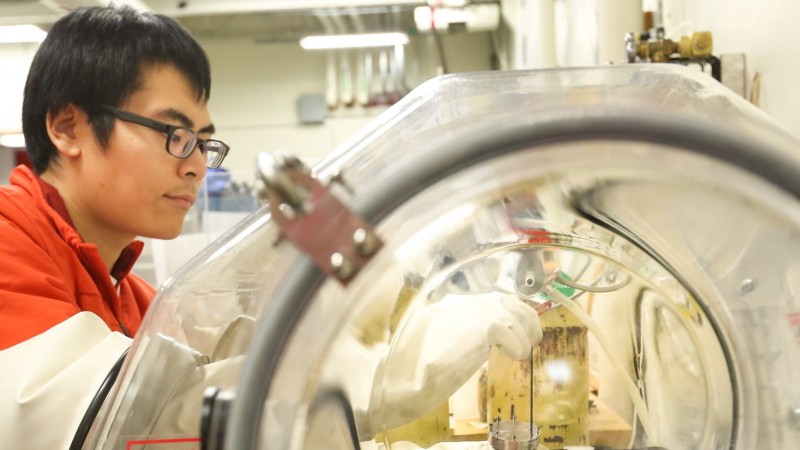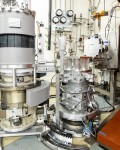Iron tellurides are gold-free minerals that are chemical cousins to rich gold-bearing tellurides—high-grade ores long prized by gold miners. Today, the poorer cousin, iron telluride, is also proving its value, by helping researchers better understand the physics of magnetism and superconductivity, which could lead to faster and more efficient electrical systems and electronic devices.
Certain variants in the iron telluride family have atomic-scale magnetic and electrical properties that cause them to exhibit “antiferromagnetic,” or alternating polarity, magnetism. These mineral’s antiferromagnetic properties are closely tied to their superconducting capabilities (the ability to conduct with little electrical resistance) that appear after scientists replace some of iron telluride’s tellurium ions with selenium ions, a process called “doping,” and lower the temperature toward absolute zero. However, antiferromagnetism in iron telluride is very different from that in iron pnictides, a similar family of materials that also displays superconductivity when doped.
To better understand the differences in the magnetic and superconducting capabilities of these materials, researchers from the University of California–Berkeley employed neutron scattering techniques at the Department of Energy’s (DOE’s) Oak Ridge National Laboratory (ORNL). The experiments were performed on the HB-1A fixed-incident-energy, triple-axis spectrometer (FIE-TAX) beamline at ORNL’s High Flux Isotope Reactor (HFIR), one of the highest-flux reactor-based sources of neutrons for research in the world.
“The holy grail is to identify and understand the fundamental connection between magnetism and superconductivity,” said Yu Song, a researcher at UC–Berkeley. “If we can determine how the magnetic behavior of materials like iron telluride leads to superconducting properties, we can perhaps identify a common mechanism for all superconductivity, even at higher temperatures. This would be a huge advance toward developing more practical and affordable superconducting technologies that could dramatically increase the electrical efficiency of the world’s power systems.”
Instead of doping iron telluride with selenium ions, the researchers used copper ions to create copper-doped, semiconducting samples of the mineral, which the scientists then probed using neutron scattering. Since neutrons are neutral and have a magnetic component, they can penetrate the material and simultaneously interact weakly with the atoms—effectively probing the magnetic order without altering it.
Earlier neutron studies of iron tellurides at the National Institute of Standards and Technology, under the direction of UC–Berkeley Professor Robert Birgeneau, also studied the structure and magnetic properties of copper-doped iron telluride. “Our prior research probed the destruction of the antiferromagnetism at very low copper dopings” said Birgeneau, “but without any concomitant crossover to superconductivity. This made it imperative to study the behavior at much higher copper dopings to see if the antiferromagnetism recovered.”
Early indications from the subsequent ORNL studies confirm that higher levels of copper doping significantly alter the magnetic order of iron telluride. “We intend to carry out additional neutron scattering measurements on heavily copper-doped iron telluride,” said Song. This will add to our knowledge of the relationship between magnetism and superconductivity.”
The work was supported by DOE’s Office of Science and the National Science Foundation.
HFIR is a DOE Office of Science User Facility. UT-Battelle manages ORNL for the DOE’s Office of Science. The Office of Science is the single largest supporter of basic research in the physical sciences in the United States, and is working to address some of the most pressing challenges of our time. For more information, please visit http://science.energy.gov/.—by Paul Boisvert






